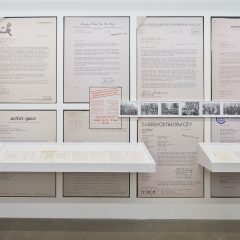[Rachel visits a successful show of contemporary Mexican and Mexican-American photography, shot from the insider perspective. — the Artblog editors]
The border. The landscape. The people. The culture. The life.
Mexico has long fascinated foreign photographers, with Paul Strand and Edward Weston being notable examples. This fascination continues today, with American photojournalists going to capture life on the other side of the border, or artists drawing inspiration from the country’s vibrant culture. While the resulting images are certainly valid (and often revelatory or beautiful), how they become interpreted and the imaginations they provoke perpetuate a long tradition of the outsider’s gaze on Mexico.
Miradas: Contemporary Mexican Photographers, an exhibit at the Bronx Documentary Center, a nonprofit and educational space founded in 2011, offers a different approach. Five photographers were invited to present images of the contemporary Mexican and Mexican-American experience. The result is a brilliant showing from those on the inside.
Immigrants’ intimate inner life
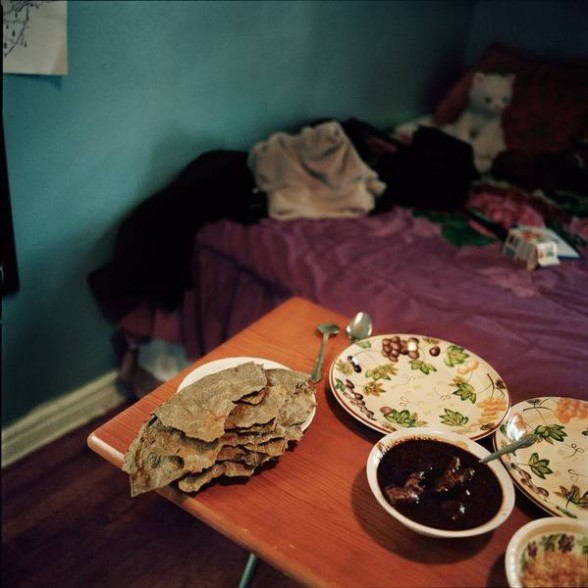
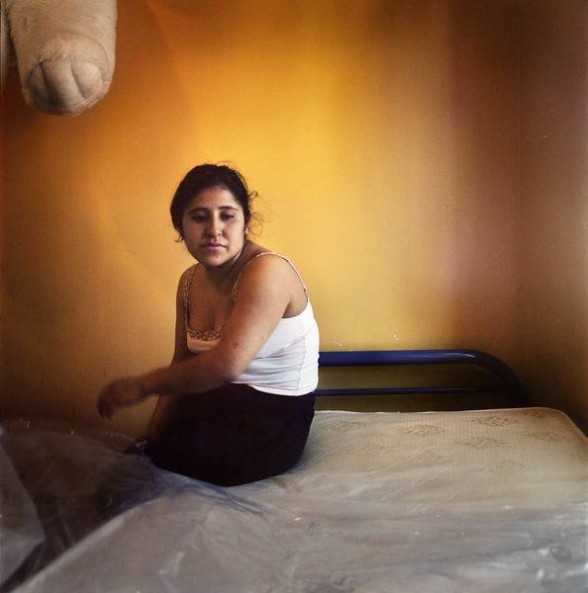
Ruth Prieto Arenas photographs Mexican immigrant women living in New York City. Throughout her images, she is distinctly interested in spaces, particularly the workspace and the home. In her project Safe Haven, she divides these spaces into colors as defined by painted walls. Red represents the restaurant, while yellow corresponds to a women’s home in Queens. Inspired by the women’s routines, Arenas masterfully catches life’s subtleties–quick glances, the movement of clothes in a washing machine, the food left on the table after a meal. On their own, the photographs are intimate snapshots. As a whole, they create a powerful narrative about the journey to make a home.

Chuy Benitez predominately photographs the Mexican-American community in Houston, where he also lives. His panoramic photographs capture daily life and are saturated with symbols linking back to the community’s cultural identity. Mariachi bands sing in a grocery store, the Mexican flag is draped over a DJ’s booth, piñatas and candles of the Virgin of Guadalupe are sold outside a church.
While the images themselves are nuanced and intriguing, it is the panoramic format that makes the photographs truly compelling. Indeed, Benitez is interested in the panorama’s relationship to Mexican Muralism–where wide compositions often narrate several scenes in one completed frame. The connection is powerful and evidently true. Just as Benitez documents a community in a moment of tremendous growth, he also reveals how it remains rooted in its cultural history.
Violence versus serenity
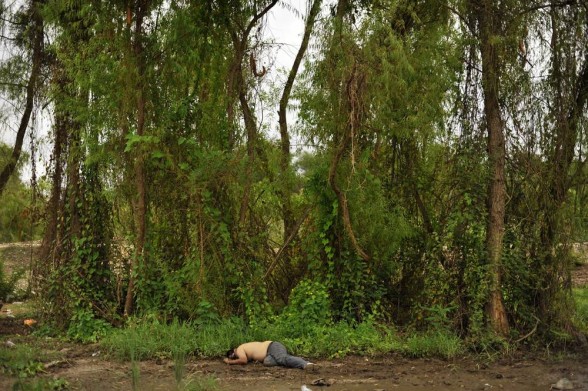
Fernando Brito’s photographs bodies dumped by drug cartels in the Sinaloa countryside. Each photograph is composed of a victim in the landscape–the juxtaposition between life and death hauntingly present. In each image, Brito manages to accomplish that rare task of the photojournalist to capture horror and beauty in a single shot. Indeed, he has stated that through photographs, he tries to give victims a bit more life–more time to be witnessed and acknowledged. He powerfully succeeds.
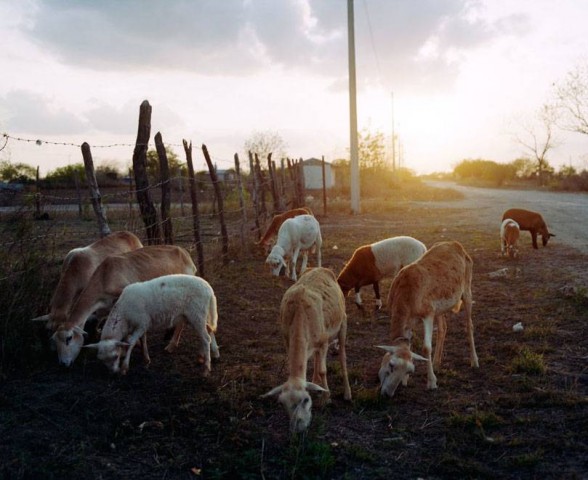
Alejandro Cartagena takes on two major themes in contemporary Mexico: Life on the border and the rise of suburbia. In the first, he photographs the lives of those who decided not to immigrate to the United States, and who settled near the border instead. He seeks to show the tranquility of life through portraits of local children, images of animals grazing, or shots of family homes. Rather than perpetuating the imagination of the border as a space rife with violence, he reveals the opposite–that life can be simple, calm; perhaps, at times, even boring.
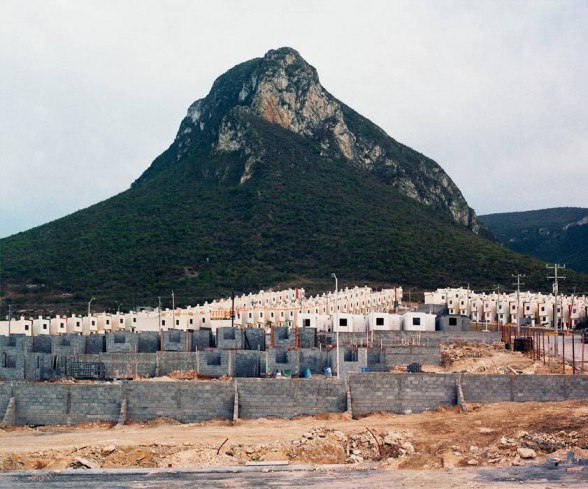
In another series, Suburbia Mexicana, Cartagena captures the construction of new developments in the region of Monterrey. In the past several years, Mexico has seen the rise of large housing projects that create rows and rows of the exact same model homes–a direct import from the United States. Cartagena’s photographs powerfully capture the oxymoronic juxtaposition between the developments and the surrounding landscape, with giant mountains in the distance looming over the tiny houses.
Returning to the developments after they become settled, Cartagena also photographs the changes they undergo and the effect on the population living there–most notably a severe fragmentation from their urban centers. The series is a phenomenal and yet disconcerting look at the changing demographics in Mexican urban centers.
Cross-sections of society
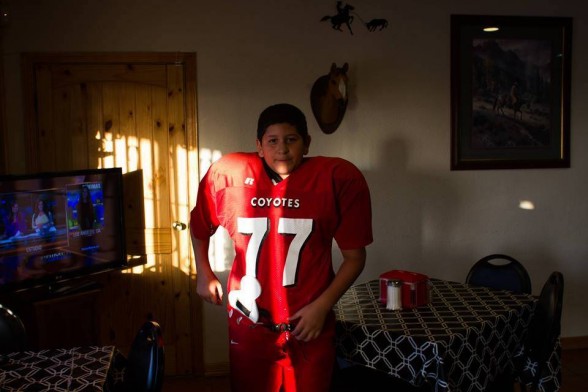

Finally, Mauricio Palos photographs Mexican society. From the upper-class elite to domestic servants, from gang members to undocumented immigrants, Palos is interested in the heterogeneity of Mexico. Presented in a collage format, his photographs starkly contrast wealth, mood, and overall reality. An upscale dinner party is juxtaposed with an immigrant hugging his guitar close to him on the subway. Palos not only reveals the differences between life in the U.S. and Mexico, but the drastic realities present in Mexico itself.
Together, Miradas: Contemporary Mexican Photographers offers an important look at the Mexican and Mexican-American experience in a moment of tremendous change and conflict, but also complete normality.
Miradas: Contemporary Mexican Photographers is on view at the Bronx Documentary Center, 614 Courtlandt Avenue, Bronx, NY, through Jan. 12, 2015.




